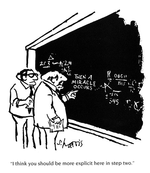Rice:Research: Difference between revisions
| Line 15: | Line 15: | ||
<div style ="width: 730px"> | <div style ="width: 730px"> | ||
==Research Description== | ==Research Description== | ||
===[[Overview]] [[Kinesin-1 tail architecture]] [[Kinesin-1 coordination with other motors and regulators]] [[Regulation of the mitotic kinesin Eg5]] | ===[[Overview]] [[Kinesin-1 tail architecture]] [[Kinesin-1 coordination with other motors and regulators]] [[Regulation of the mitotic kinesin Eg5]] | ||
[[Research | <font face="trebuchet ms" style="color:#ffffff"> '''Overview''' </font>]] | [[Research | <font face="trebuchet ms" style="color:#ffffff"> '''Overview''' </font>]] | ||
Revision as of 12:49, 15 May 2013
Research Description
===Overview Kinesin-1 tail architecture Kinesin-1 coordination with other motors and regulators Regulation of the mitotic kinesin Eg5
Overview Kinesin-1 tail architecture Kinesin-1 coordination with other motors and regulators Regulation of the mitotic kinesin Eg5
The long-term goals of my laboratory’s research are to understand the functions of molecular motor tails in detail, and to understand how the function of a motor’s tail, combined with the function of its head, enables it to fulfill its role in the cell.
While the detailed stepping mechanisms of several molecular motors are well known, the mechanisms by which they perform their duties in the cell are more complex and much less well-characterized. The reason for this is that the tail domains of motors, which have functions such as assembly of motors into larger structures, cargo binding, and regulation, are poorly understood. My laboratory’s research seeks to begin elucidating the function of molecular motor tail domains.
Conventional kinesin is a molecular motor that translates the energy of ATP hydrolysis into unidirectional transport of its cargo. The tail and light chain domains of conventional kinesin regulate its activity when the motor is not cargo-bound in the cell, but the mechanism by which they perform this regulation is not completely understood. Mutations in kinesin and proteins that interact with it have been implicated in several diseases, including colon cancer, Alzheimer’s disease, and neurofibromatosis. Understanding how kinesins are regulated in the cell may lead to new therapeutics for these diseases. Our long-term goal is to have a detailed structural understanding of how the kinesin tail and light chain domains regulate the motor’s activity.
The current research in my laboratory focuses on the idea that a direct interaction of the kinesin tail with the head is likely to be the cause of the drastic effects on kinesin’s ATPase and microtubule-binding activity that occur when the motor is regulated. We will use mutagenesis and chemical crosslinking to determine exactly which amino acids of the tail and/or light chains interact with the head, and we will perform EPR (electron paramagnetic resonance) and FRET (fluorescence resonance energy transfer) spectroscopy to detect conformational changes that take place upon regulation.
